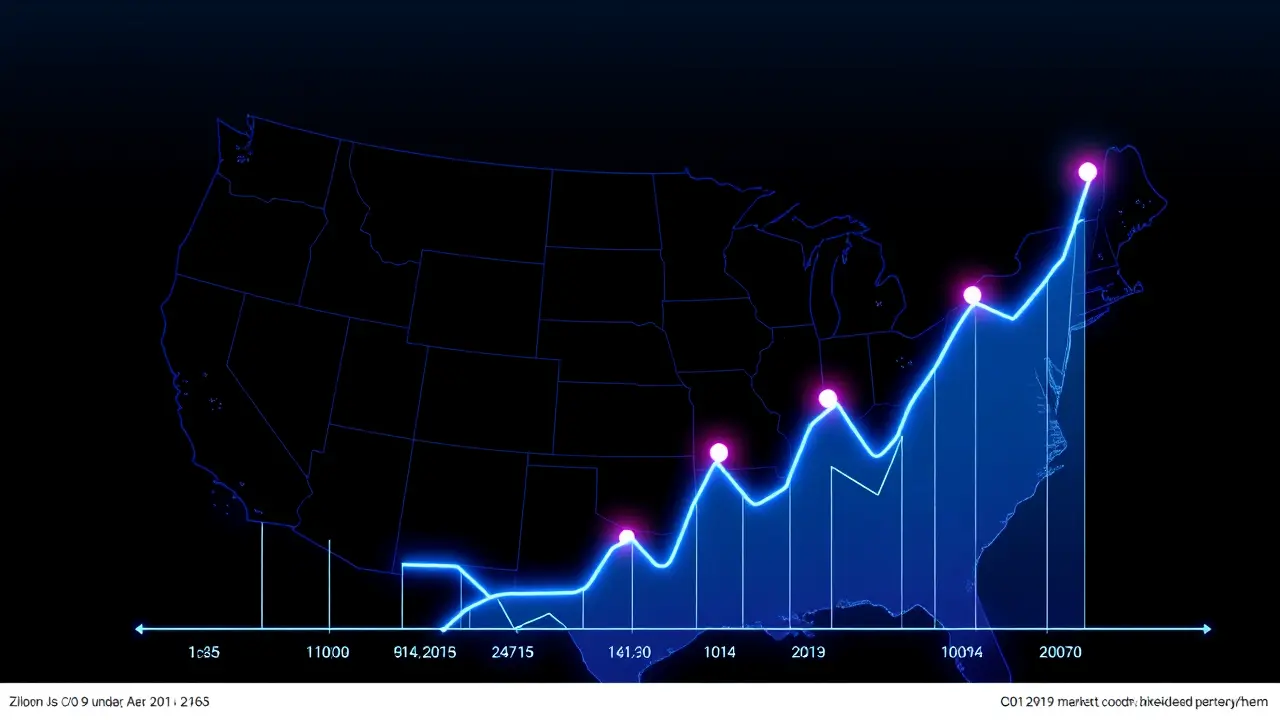
Hottest
Financepersonal financeMortgages and Real Estate
Zillow's Updated Housing Market Ratings for Over 400 Regions
ET
Ethan Brown
8 hours ago7 min read
Navigating today's housing market feels like trying to crack a complex investment code, and Zillow's latest Market Heat Index for over 400 regions offers a crucial decoder ring for anyone with skin in the game. Think of it like a personal finance dashboard for the entire U.S. real estate landscape, where every data point tells a story about where your potential down payment might work hardest.Zillow’s economists have built a sophisticated model that crunches numbers on everything from price fluctuations and inventory levels to how long properties linger on the market, distilling it all into a single, telling score. A high score, say 70 or above, signals a red-hot seller's market where bidding wars are the norm and buyers need to come armed with their best offers.On the flip side, a score dipping to 27 or below indicates a strong buyer's market, where negotiation power shifts and you might actually have the luxury of time to think a decision over. This isn't just academic; it's the practical intelligence that separates savvy investors and homebuyers from those who get caught in emotional, and often costly, real estate frenzies.The recent data reveals a fascinating and fragmented national picture. While the Northeast and Midwest have largely held their ground as seller-friendly territories, maintaining a surprising resilience, the Gulf region and parts of Southwest Florida tell a different tale altogether.These areas have seen a noticeable cooling, with inventory building up and giving buyers the upper hand—a dynamic I’ve observed closely, and one that aligns with the principles of value investing: sometimes the best opportunities are found where the crowd isn't looking. It’s reminiscent of the lessons from 'Rich Dad Poor Dad,' where understanding market cycles is key to building wealth.However, no single metric should ever be your sole guide. Just as you’d diversify a stock portfolio, a prudent housing market analysis demands a multi-faceted approach.Beyond Zillow's index, astute stakeholders are digging into the velocity of inventory changes, comparing current stock levels to pre-pandemic 2019 benchmarks, and tracking both year-over-year and month-over-month price adjustments. Platforms like the ResiClub Terminal are invaluable here, offering this granular data down to the ZIP code level, empowering you to make decisions based on a full spectrum of information rather than a single headline number.The story from September 2019 to September 2025, illustrated through Zillow's sequential snapshots, is a rollercoaster of economic shock, stimulus-fueled mania, and a subsequent rebalancing—a masterclass in market cycles that every fintech enthusiast and personal finance follower should study. While I generally concur with Zillow's directional assessment, my own analysis suggests that some West Coast markets are softer than their scores imply, and certain Midwest pockets are tighter, highlighting the importance of local, on-the-ground intelligence.In the end, whether you're a first-time homebuyer, a real estate investor, or simply planning your next move, treating the housing market with the same disciplined, data-informed strategy you'd apply to any major financial decision is the ultimate key to success. It’s not about timing the market perfectly, but about understanding its temperature, knowing your own financial position, and making a move that aligns with your long-term goals.
#hottest news
#Zillow Market Heat Index
#housing market analysis
#buyer's market
#seller's market
#real estate trends
#regional ratings
#inventory levels
Stay Informed. Act Smarter.
Get weekly highlights, major headlines, and expert insights — then put your knowledge to work in our live prediction markets.
© 2025 Outpoll Service LTD. All rights reserved.